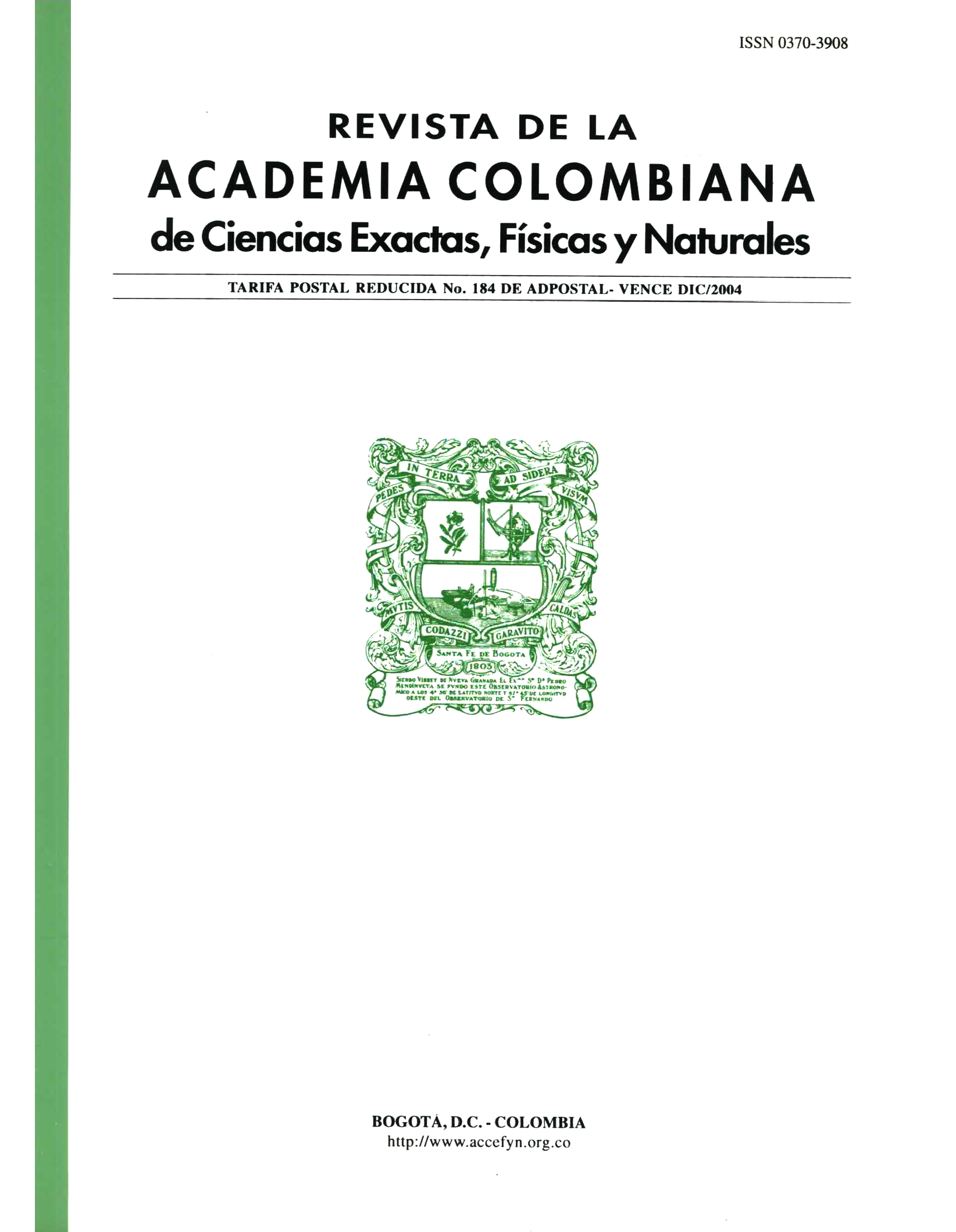Resumen
El presente estudio evaluó el efecto del nitrógeno y la irradianza sobre la eficiencia fotosintética (Fv/Fm) de Petiveria alliacea. Los resultados mostraron que la fluorescencia disminuyó al aumentar el nivel de irradianza y al disminuir la concentración de nitrógeno. La eficiencia fotosintética fue significativamente mayor en hojas de plantas con mayor disponibilidad de nitrógeno y en ambientes parcialmente sombreados. Las curvas de luz (F-I) en función de la tasa de transporte de electrones (ETR), mostraron que las plantas bajo sombra y expuestas a bajas concentraciones de nitrógeno fueron más susceptibles a bloqueos en su ETR
Referencias
Barber, J. 1994. Molecular basis of the vulnerability of photosystem II to damage by light. Australian Journal of Plant Physiology. 22: 201-208.
Bilger, W., U. Schreiber & M. Bock. 1995. Determination of the quantum efficiency of photosystem II and of non-photochemical quenching of chlorophyll fluorescence in the field. Oecologia, 102: 425-432.
Cechin, I. & T. De Fátima. 2004. Effect of nitrogen supplied on growth and photosynthesis of sunflower plants grown in the greenhouse. Plant Science 166: 1379-1385.
Del, J & P. Toivonen (eds). 2003. Practical Applications of Chlorophyll Fluorescence in Plant Biology. Kluwer academic. N.J., USA.
Gemel, J., B. Waters-Earhart, M. R. Ellersieck, A. Asfaw, G. F. Krause, V. Puri & W. R. Lower. 1997. Photosynthetic electron transport as a bioassay. Págs 209-224 en: Wang, W., J. W. Gorsuch & J. S. Hughes. Plants for Environmental Studies. CRC Press LLC. New York
He, J., C. W. Chee & C. J Goh. 1996. “Photoinhibition” of Heliconia under natural tropical conditions: the importance of leaf orientation for light interception and leaf temperature. Plant, Cell and Environment. 19: 1238-1248.
He, J., C. W. Chee & C. J Goh. 1996. “Photoinhibition” of Heliconia under natural tropical conditions: the importance of leaf orientation for light interception and leaf temperature. Plant, Cell and Environment. 19: 1238-1248.
Hoagland, D.R., D.I. Arnon. 1950. The water-culture method for growing plants without soil. Calif. Agric. Exp. Station Circ. 347: 1–32.
Horton, P., A. V. Ruban & R. G. Walters. 1996. Regulation of light harvesting in green plants. Annual Review of Plant Physiology and Plant Molecular Biology. 47: 655 – 684.
Johnson, C.M., P. R. Stout, T.C. Broyer, A. B. Carlton. 1957. Comparative chlorine requirements of different plant species. Plant Soil. 8: 337–353.
Kooten, V.O. & J. F. Snel. 1990. The use of Chlorophyll fluorescence nomenclature in plant stress physiology. Photosynthesis Research 25: 147–150.
Krall, J. P. & G. Edwards. 1992. Relationship between photosystem II activity and CO2 fixation in leaves. Physiologia Plantarum 86: 180-187.
Krause, G. H. 1988. Photoinhibition of photosynthesis. An evaluation of damaging and protective mechanisms. Physiologia Plantarum 74: 566-574.
Krause, G. H. & E. Weis. 1991. Chlorophyll fluorescence and photosynthesis: the basics. Annals Review Plant Physiology 26: 125-134.
Larcher, W. 1995. Physiological Plant Ecology. 3ra Edición. Springer (Ed). Alemania.
Lichtenthaler, H. K. & S. Burkart. 1999. Photosynthesis and highlight stress. Bulgarian Journal Plant Physiology 25 (3-4): 3-16.
Maxwell K. & Johnson, G.N. 2000. Chlorophyll fluorescence–a practical guide. Review Article. Journal of Experimental Botany, Vol. 51 (345): 659-668.
Peña, E. J. 1998. Physiological ecology of mangrover associated macroalgae in a tropical estuary. Dissertation. University of South Carolina, USA.
Peña, E. J. , 2004. Ecofisiología de algas bénticas asociadas a manglar, En H. M. Cabrera (Ed) Fisiología ecológica en plantas. Mecanismos y respuestas a estrés en los ecosistemas. Pontificia Universidad de Valparaíso, Chile.
Peña, E. J. , R. Zingmark & C. Nietch. 1999. Comparative photosynthesis of two species of intertidal epiphytic macroalgae on mangrove roots during submersion and emersion. Journal Phycology 35: 1206-1214
Pérez, E. 1996. Plantas Útiles de Colombia, 5ª ed. fondo FEN, Bogotá (Colombia).
Poorter, H. N. 2000. The role of biomasa allocation in the growth response of plants to different levels of Light, CO2, nutrients and water: a quantitaive review. Australian Journal Plant Physiology 27: 595-607.
Poorter, H. N. & M. Perez-Soba. 2001. The growth response of plants to elevated CO2 under non-optimal environmental conditions. Oecologia 129: 1-20.
Salisbury, F. B. & C. W. Ross. 1994. Fisiología vegetal. Grupo Editorial Iberoamericana. México.
Tóth, V. R., I. Meszaros, S. Verez & J. Nagy. 2002. Effects of the available nitrogen on the photosynthetic activity and xanthophyll cycle of maize in field. Journal Plant Physiology 159: 627-634.

Esta obra está bajo una licencia internacional Creative Commons Atribución-NoComercial-SinDerivadas 4.0.
Derechos de autor 2023 https://creativecommons.org/licenses/by-nc-nd/4.0

